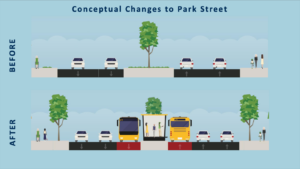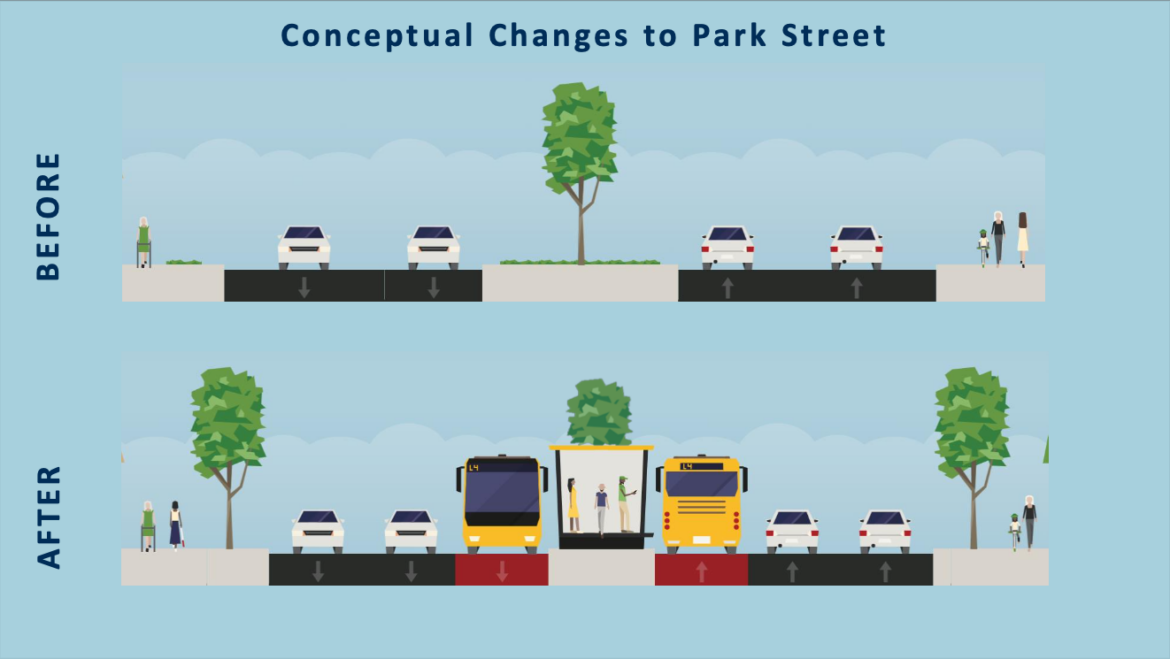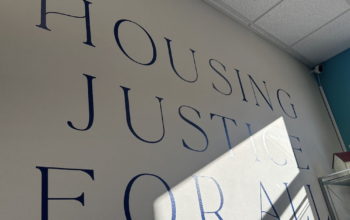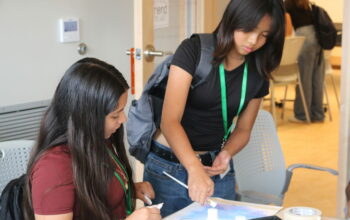Ruben Anthony often takes his grandchildren to Penn Park, where different festivals marking occasions like Juneteenth take place. But to get there from his office at the Urban League of Greater Madison, where he is the president and CEO, he and his grandchildren have to cross a very busy portion of South Park Street.
“We always have to be looking out really hard because cars are coming really fast at that (traffic) light and safety really needs to be a priority,” Anthony said.
Cycling down Park Street can be hazardous as well, according to Madison’s Director of Transportation Tom Lynch.
“If you want to send your kid to the library, how do they get there on their bike? There’s no good way to get there,” Lynch said. “If you’re going out for a walk in the summer on Park Street, it’s a hot walk because there’s no shade, no trees. It’s all out in the sun.”
South Park Street has long been considered a vehicle-centered road. But now the city of Madison has put forward proposals to allocate some of the funding for the North-South bus rapid transit line planned for 2027 toward the reconstruction of the portion of the street that runs from Badger Road to Fish Hatchery Road.
The aim is to make it more human-centered by widening sidewalks, planting trees to provide shade and adding bicycle lanes. These changes, coupled with the bus lanes for Madison Metro’s bus rapid transit, called BRT, are expected to benefit residents and businesses in the area, as well as residents from other parts of Madison who wish to visit them.
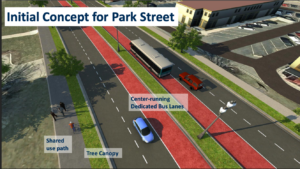
District 8 Alder MGR Govindarajan, whose district includes part of Park Street, believes the reconstruction project is important for accessibility reasons.
Among other changes, “the sidewalks will be expanding a little bit more, which is really important because, for example, if someone is on a wheelchair, you can walk next to them instead of having to walk around them,” said Govindarajan, who is also a member of the city’s Transportation Commission.
The new Park Street will have two lanes for cars, a dedicated lane for buses running on the north-south BRT route and BRT shelters in the center of the road, Govindarajan said.
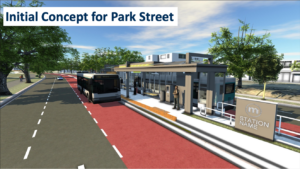
The south Madison area has seen multiple business, community and residential developments in the past few years, with many organizations aiming to revive the area as the center of Black and brown culture in Madison. The Center for Black Excellence, Centro Hispano’s new building and the Black Business Hub, a project of the Urban League, are some of the new spaces in the area that are likely to benefit from the Park Street reconstruction.
“The timing of this is pretty good with all of these emerging spaces,” said Anthony, head of the Urban League. “We want people to come and stop through at these new spaces instead of just passing through. The Black Business Hub will have bicycle racks in the basement, so we’re anticipating commuters to get out of their cars and use their bikes to come to the Hub.”
Making Park Street more pedestrian and cyclist-friendly while providing transit from other parts of the city through the BRT line will also encourage more people to patronize “hidden gems” in the area, Anthony said.
“There’s a lot of hidden treasures in South Madison — great Latino restaurants, Chinese restaurants,” Anthony said. “It’s almost like a multicultural Mecca that lots of folks don’t know about.”
Mayor Satya Rhodes-Conway’s 2024 capital budget proposed $6.8 million in local funding and $10 million in state funding for the project. The common council passed the budget on Nov. 14.
“We submitted an application to the Federal Transit Administration, proposing construction in 2026,” said Tom Lynch, director of transportation for the City of Madison. “They receive applications from projects all throughout the United States in August, evaluate them and give them a rating, and then they publish a report in March that contains the ratings and recommendations for funding.”
The recommendations for which projects the FTA will fund may alter when they are scheduled to begin work based on how much money is available for each year, Lynch said, and so it is possible that the project could be pushed back.
When construction does take place, Govindarajan acknowledged it will cause disruptions for some time.
“When this project happens over the next couple of years, construction itself might be annoying, but after that it’s going to have a massive positive impact on the community,” he said.
